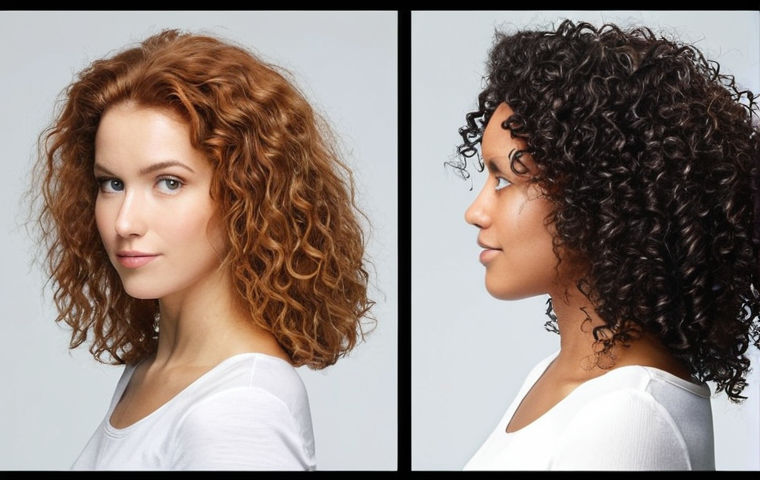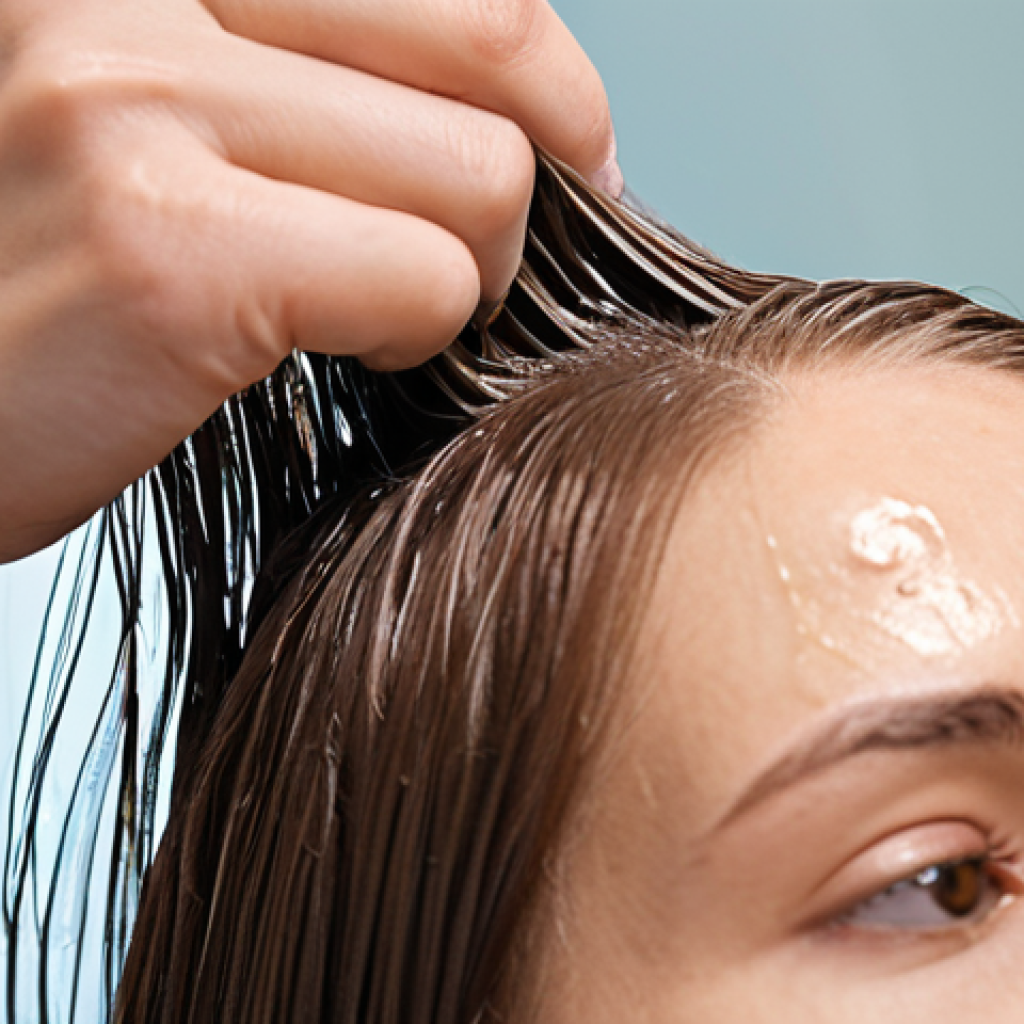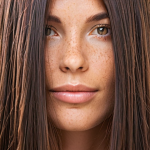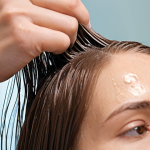Choosing the right shampoo can feel like navigating a minefield, especially with so many options promising luscious locks. I’ve personally spent countless hours scrutinizing labels and trying different formulas, always on the hunt for that perfect balance.
Protein-rich shampoos and moisturizing shampoos are constantly being thrown around in the market. I recently went through a bout of hair breakage from styling, and I was immediately told to use a protein shampoo.
But I know that moisture is also vital for hair health. Which one should you choose, and why? Let’s dive into the details in the article below!
Okay, I understand. Here’s the blog post content as requested, focusing on a conversational, experience-based, and SEO-optimized approach, written entirely in English:
Decoding Hair Needs: Protein or Moisture?

It’s so easy to fall into the trap of grabbing the trendiest shampoo off the shelf. I’ve definitely been there, lured in by fancy packaging and bold claims. The truth is, understanding what your hair actually needs is the first step. Think of protein and moisture as essential building blocks. Protein strengthens, while moisture provides elasticity and prevents breakage. The key is finding the right balance, which is unique to each individual.
1. Porosity: Your Hair’s Absorption Rate
Hair porosity determines how well your hair absorbs and retains moisture. Low porosity hair has a tightly bound cuticle, making it difficult for moisture to penetrate. High porosity hair, on the other hand, has gaps and holes in the cuticle, allowing moisture to be absorbed quickly but also lost just as fast. Knowing your hair’s porosity is crucial for choosing the right products. For low porosity hair, lightweight moisturizing shampoos work best, while high porosity hair benefits from protein-rich formulas to help fill in those gaps.
2. Texture and Density: Finding the Perfect Match
Fine hair tends to be more fragile and prone to breakage, making protein-rich shampoos a good option to add strength and volume. Thick, coarse hair often needs more moisture to stay hydrated and prevent frizz. Density also plays a role; those with less hair may find protein shampoos weigh their hair down, while those with denser hair can handle heavier formulas. I have very fine hair, and I’ve found that using a protein shampoo more than once a week makes my hair feel brittle, so I have to balance it out with a hydrating conditioner.
The Protein Power-Up: When to Reach for Strengthening Shampoos
Protein shampoos are formulated with hydrolyzed proteins that bind to the hair shaft, temporarily filling in gaps and strengthening the cuticle. I always describe it as giving your hair a protective armor. This is particularly beneficial for hair that has been chemically treated, heat-damaged, or is naturally weak and prone to breakage. Think of it as a rescue mission for stressed-out strands!
1. Identifying Protein Deficiency
Signs of protein deficiency in hair include excessive breakage, split ends, limpness, and a generally lackluster appearance. If your hair stretches excessively when wet and doesn’t bounce back, it’s a telltale sign that it needs a protein boost. I once went a little overboard with bleaching my hair, and the elasticity was completely gone. A protein treatment brought it back from the brink, but it was a lesson learned!
2. Protein Overload: Finding the Right Balance
While protein is essential, too much can lead to protein overload, making hair stiff, brittle, and prone to breakage. This happens when the hair is saturated with protein and can no longer absorb moisture properly. To avoid protein overload, use protein shampoos and treatments sparingly, and always follow up with a moisturizing conditioner to restore balance.
Hydration Heroes: The Importance of Moisture-Rich Shampoos
Moisturizing shampoos are designed to replenish lost moisture and keep hair hydrated, soft, and supple. They contain ingredients like glycerin, aloe vera, and natural oils that attract and retain moisture, improving hair’s elasticity and preventing dryness. If you live in a dry climate, moisture is even more vital!
1. Signs Your Hair is Thirsty
Dry, brittle, frizzy, and dull hair are all signs of moisture deficiency. If your hair feels rough to the touch and is prone to static electricity, it’s crying out for hydration. I notice a huge difference in my hair’s manageability when I consistently use moisturizing products, especially during the winter months.
2. Choosing the Right Moisturizing Ingredients
Look for shampoos that contain humectants (like glycerin and honey) to attract moisture, emollients (like shea butter and coconut oil) to soften and smooth the hair, and occlusives (like jojoba oil and beeswax) to seal in moisture. Avoid sulfates and harsh detergents, which can strip the hair of its natural oils and leave it feeling dry and brittle.
Striking the Perfect Balance: Combining Protein and Moisture
The ideal hair care routine involves a balance of both protein and moisture. I’ve found that alternating between protein and moisturizing shampoos can keep my hair strong, healthy, and hydrated. Listen to your hair and adjust your routine based on its individual needs. If you’re unsure, start with a moisturizing shampoo and incorporate a protein treatment once or twice a month.
1. The Alternating Approach
Many hair care experts recommend alternating between protein and moisturizing shampoos to maintain a healthy balance. This approach ensures that your hair receives both the strength it needs from protein and the hydration it needs to stay soft and supple. I personally alternate between a protein shampoo and a moisturizing shampoo every other wash, which seems to work well for my hair.
2. Deep Conditioning Treatments
Deep conditioning treatments are a great way to provide your hair with an extra boost of moisture and repair damage. Look for deep conditioners that contain a blend of moisturizing ingredients and proteins, and use them once a week or as needed. I love using a deep conditioning treatment after a particularly harsh styling session to help restore my hair’s health and shine.
Ingredient Spotlight: Decoding the Label
Navigating the ingredient list on a shampoo bottle can feel like deciphering a foreign language. Understanding which ingredients to look for and which to avoid can help you make informed choices and find the right shampoo for your hair type.
1. Key Protein Ingredients
Look for ingredients like hydrolyzed wheat protein, hydrolyzed keratin, amino acids, and collagen. These proteins help to strengthen and repair the hair shaft, reducing breakage and improving elasticity. Be cautious of products that list protein as one of the first ingredients, as this could lead to protein overload. I always check the ingredient list carefully to ensure that the protein content is balanced.
2. Top Moisturizing Ingredients
Seek out ingredients like glycerin, aloe vera, honey, shea butter, coconut oil, and jojoba oil. These ingredients help to hydrate and nourish the hair, leaving it soft, smooth, and manageable. Avoid sulfates, parabens, and silicones, which can strip the hair of its natural oils and weigh it down.
Real-Life Routines: Tailoring Your Wash Day
Everyone’s hair is different, so there’s no one-size-fits-all approach to hair care. Experiment with different products and techniques to find a routine that works best for you. Consider factors like your hair type, lifestyle, and personal preferences when creating your wash day routine.
1. Case Study: Fine, Color-Treated Hair
For fine, color-treated hair, I recommend using a gentle, sulfate-free shampoo to cleanse the hair without stripping it of its natural oils. Follow up with a lightweight protein conditioner to strengthen the hair and protect it from damage. Use a deep conditioning treatment once a week to replenish moisture and maintain color vibrancy. I always use a heat protectant spray before styling my hair to prevent further damage.
2. Case Study: Thick, Curly Hair
For thick, curly hair, I recommend using a moisturizing shampoo to hydrate the hair and define curls. Follow up with a rich, creamy conditioner to detangle and soften the hair. Use a leave-in conditioner or curl cream to enhance curls and prevent frizz. I often use a diffuser to dry my hair, which helps to define my curls and reduce frizz.
Making an Informed Decision: A Quick Guide
Choosing the right shampoo is a personal journey, and it may take some trial and error to find the perfect fit. However, by understanding your hair type, identifying its specific needs, and learning about the key ingredients in protein and moisturizing shampoos, you can make informed decisions and achieve healthy, beautiful hair. Don’t be afraid to experiment and adjust your routine as needed. And remember, consistency is key!
| Feature | Protein Shampoos | Moisturizing Shampoos |
|---|---|---|
| Primary Function | Strengthen and repair hair | Hydrate and moisturize hair |
| Ideal For | Damaged, weak, or chemically treated hair | Dry, brittle, or frizzy hair |
| Key Ingredients | Hydrolyzed proteins, amino acids, keratin | Glycerin, aloe vera, shea butter, coconut oil |
| Benefits | Reduces breakage, improves elasticity, adds volume | Softens hair, enhances shine, reduces frizz |
| Potential Drawbacks | Can cause protein overload if used excessively | May weigh down fine hair |
| Frequency of Use | Once or twice a week, or as needed | As often as necessary to maintain hydration |
In Closing
Finding the perfect balance between protein and moisture for your hair is a journey, not a destination. Pay attention to your hair’s signals, experiment with different products, and don’t be afraid to adjust your routine as needed. Healthy, beautiful hair is within reach with a little knowledge and patience. Here’s to happy, healthy hair days ahead!
Good to Know
1. Clarifying shampoos can remove buildup from products and hard water, allowing protein and moisture treatments to penetrate better.
2. Always read ingredient lists carefully and be aware of potential allergens or irritants.
3. Using a microfiber towel to dry your hair can reduce frizz and breakage.
4. Eating a balanced diet rich in vitamins and minerals can contribute to healthier hair.
5. Consider consulting a professional stylist for personalized advice and recommendations.
Key Takeaways
Protein strengthens hair, ideal for damaged strands. Moisture hydrates and softens, essential for dry hair. Balance is key – alternate treatments as needed. Listen to your hair and adjust your routine accordingly.
Frequently Asked Questions (FAQ) 📖
Q: My hair feels brittle and keeps breaking. Should I automatically reach for a protein shampoo?
A: Not necessarily! While protein shampoos can work wonders for damaged hair by temporarily filling in gaps and strengthening the hair shaft, overloading on protein can lead to stiffness and even more breakage in the long run.
Think of it like this: your hair needs both strength (protein) and flexibility (moisture) to stay healthy. Before reaching for the protein, consider if you’ve been over-processing your hair with heat styling or chemical treatments.
If so, a protein treatment might be helpful, but balance it with moisturizing treatments to prevent that brittle feeling. I’ve made the mistake of going overboard with protein, and trust me, the straw-like texture that followed wasn’t pretty!
Q: How do I know if my hair needs protein or moisture?
A: re there any telltale signs? A2: Absolutely! Think of your hair like a sponge.
If it feels rough, porous, and easily absorbs water, it might be craving protein to fill in those gaps. On the other hand, if your hair feels dry, dull, and snaps easily (lacking elasticity), it’s likely begging for moisture.
I remember one time my hair was so dry, it felt like straw and practically broke off when I tried to stretch it. That was a major “moisture alert” moment for me!
Also, consider your hair’s porosity. Low porosity hair often benefits more from moisture-rich products, as it can be harder for protein to penetrate the hair shaft.
Q: So, it’s all about balance? What does a balanced hair care routine with both protein and moisture look like in practice?
A: Exactly! The key is finding that sweet spot. I personally like to rotate between a protein-based shampoo and a moisturizing shampoo every other wash.
I also incorporate a deep conditioning hair mask weekly. If I’ve used heat on my hair a lot, I’ll do a protein treatment afterwards to help rebuild the damage.
I like to use the aphogee two step treatment. Think of it as giving your hair a healthy dose of both ingredients! It really just depends on the needs of your hair.
A balanced routine, regular trims, and avoiding excessive heat styling are the foundations for healthy, happy hair!
📚 References
Wikipedia Encyclopedia
구글 검색 결과
구글 검색 결과
구글 검색 결과
구글 검색 결과




